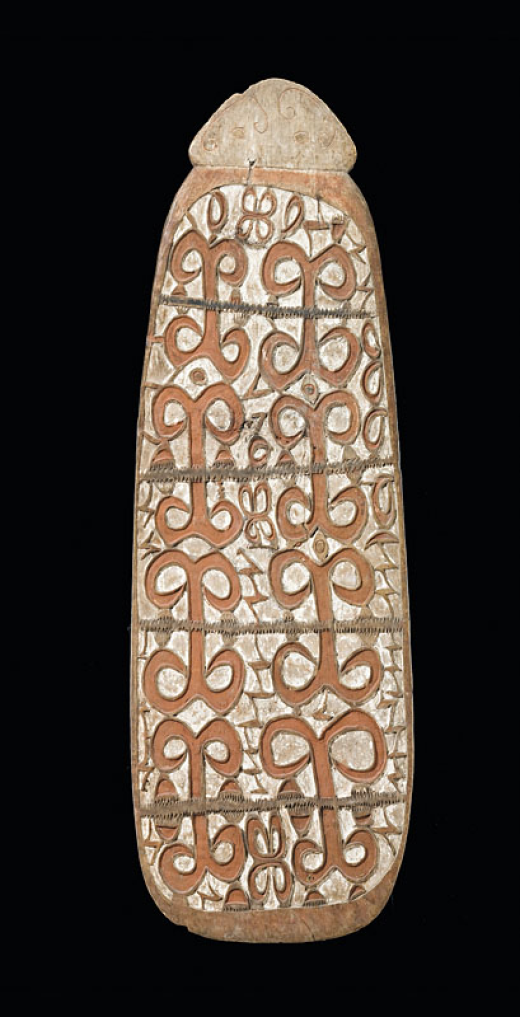An Asmat Shield
An Asmat ShieldEstimate $8,000 – $12,000
- Lot Sold $6,500 (Hammer Price)
- $7,800 (Hammer Price with Buyer's Premium)
WEO VILLAGE, JEREP RIVER, NORTH WEST ASMAT, WEST PAPUA NEW GUINEA
carved and incised hardwood, red and white ochre
HEIGHT: 172CM
Provenance:
Collected in the 1950s by Crosier Brother Clarence Nuener, at the Mission Station at Yamas, North West Asmat
Private Collection
Cf. For discussion of an Asmat shield with similar motifs see Dirk Smidt, Asmat Art, New York: Braziller, 1993. Smidt says: 'In a culture where death was never accidental and all required avenging in a continuous cycle of warfare, shields served a practical purpose of protection but also the symbols carved on the shields radiated power, invigorating the shields owner and striking fear into the enemy. The shields are named after dead relatives. The magical powers of the shield gave the carrier exceptional power combining his strength with that of the deceased ancestor to which the shield shared the name. The shields were used not just in battle but to scare off evil spirits that may have brought misfortune to the village. These shields were made for a shield feast which initiated a headhunting expedition.
Because of their symbolic and emotional value shields were precious and in the North Western Asmat region passed down from father to son. The designs on the shields are highly stylised. The large scrolled motifs on the shield and small feet represent the flying fox, a symbol of headtaking.
The people of the Asmat believed the flying fox was an aggressor as it lands on the trees and eats the fruit which was also thought to represent mens heads. The larger rounded head at the top of the shield can have a range of meanings. Examples have been documented as representing a stylised face, facial tattoos, or an animal such as a stingray' (Dirk Smidt, 1993, p.71).
Sale Room Notice:
Please note that the provenance listed for this shield is believed to be inaccurate. The shield is from the Sepik River area of North West Asmat and is likely to date from the early 1960s.

